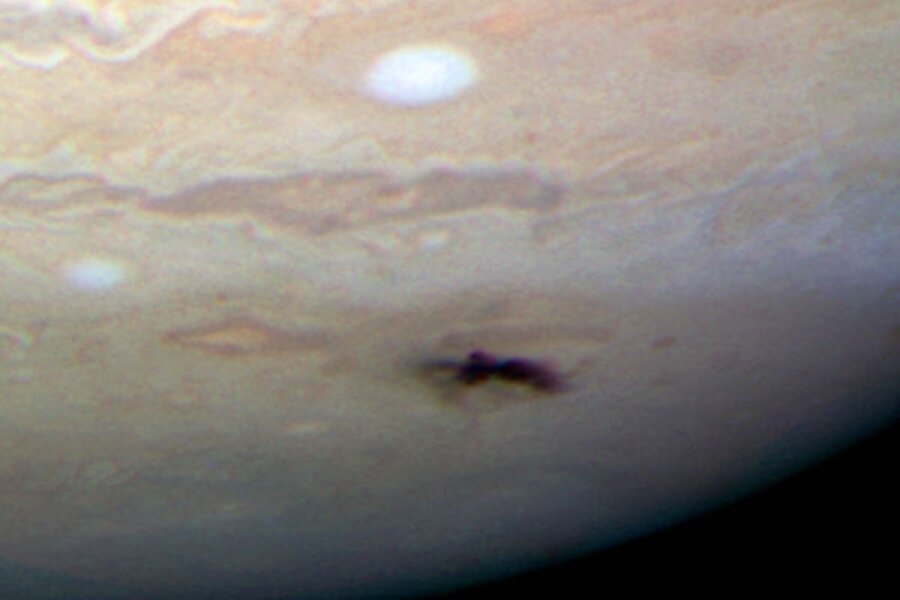Jupiter captures a comet, briefly
Loading...
In July, when an object hurtled into Jupiter's clouds and scarred its cloud tops for all to see, humans had another chance to thank their lucky planet that Jupiter orbits where it does. It can act as a kind of one-planet offensive line, protecting the inner-planet backfield.
Now, a team of Japanese and British astronomers is reporting -- again* -- that Jupiter also can turn these objects into moons, at least or a few years.
The team found that from 1949 to 1961, Jupiter captured comet 147P/Kushisa-Muramatsu, which fell into an irregular orbit around the gas giant. It marked the fifth incident astronomers have uncovered so far where Jupiter has gained, then quickly lost, a potential moon.
The comet in question made two full trips around the planet before it beat cosmic feet and headed out again.
Based on the other four instances where Jupiter has briefly captured an object that completes at least one full Jovian orbit, such events occur on average about once every 10 years, the astronomers calculate.
The results imply that "impacts on Jupiter and temporary satellite-capture events may happen more frequently than we previously expected," according to David Asher, a scientist with the Armagh Observatory in Britain.
What sort of objects be these? A likely source is a group of comets known as quasi-Hilda comets.
Who's Hilda? Actually, an asteroid (yep, not a comet) in the belt of asteroids that orbit the sun between Mars and Jupiter. Discovered in 1875, the object had an unusual orbit for a main-belt asteroid. Similar discoveries followed, leading astronomers to group them into a family known as the Hilda family.
They are main-belt objects that are the closest to Jupiter. They orbit the sun at a pace that carries a unique mathematical relationship to Jupiter's orbital period. (They show a 3:2 orbital resonance with Jupiter, for the astronomically picky.)
The quasi-Hilda comets are a subgroup of comets that never travel farther from the sun than Jupiter. And they have orbital traits relative to Jupiter's that are similar to the Hilda asteroids' traits.
*The results were first reported formally last year in the journal Astronomy and Astrophysics Review. You can find a PDF "preprint" of the article here. The team reprised the results at this week's meeting of the European Planetary Science Congress in Potsdam, Germany.





